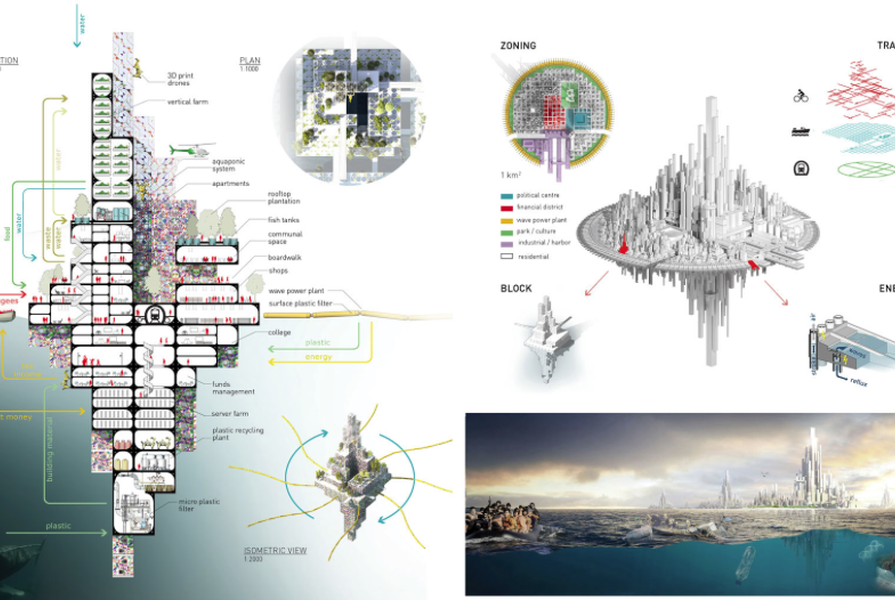A 3D-printed island that feeds on plastic waste and a metaphysical ode to memory and loss are among five designs that have been named equal winners of the LA+ Imagination competition.
Organized by the LA+ Journal, with Australian landscape architect and creative director of LA+ Journal Richard Weller as jury chair, the design ideas competition sought to explore notions of paradise, utopia and dystopia by asking designers to create a hypothetical island.
There was only one rule: the island or archipelago of islands could not be bigger than a total of one square kilometre in area.
Australia-based Noel Schardt and Berlin-based Bjoern Muendner of Freischaerler Architects were among the winners for their design The United Plastic Nation.
United Plastic Nation by Noel Schardt and Bjoern Muendner (Freischaerler Architects).
Image: LA+ Journal
Proposed to be located in the Great Australian Bight, off the coast of Esperance in Western Australia, the island is described by the architects as an ever-growing structure, slowly turning circles around the globe collecting plastic, which a swarm of robotic drones turns into building material.
“The island grows both horizontally and vertically along a New York-like grid, forming an unsinkable iceberg structure,” the design statement reads.
“Eventually a landmass of 1 km2 emerges with residential, industrial, recreational, and commercial zones – the first district of the United Plastic Nation.”
Jacky Bowring, editor of Landscape Review and professor of landscape architecture at Lincoln University in Christchurch, New Zealand, was also named winner for her design, The Island of Lost Objects.
The Island of Lost Objects by Jacky Bowring (Lincoln University, New Zealand).
Image: LA+ Journal
Bowring imagines “discovering” documents of her fictional island while researching at the Royal Geographic Society in London. The Island of Lost Objects is located at the “antipodal point” to the real life Howland Island, an uninhabited coral island in the Pacific Ocean.
In her imaginary scenario, Howland Island has dematerialized and rematerialized at 0.00°N 0.00°E, the world’s “null point” and become a “forlorn and windswept […] place for the love of loss [and] the prolonging of longing.”
“The island is evidently for the contemplation of all lost objects: love, civilizations, innocence, missing persons, MH370, passenger pigeons, the Great Buddha of Bamiyan.”
Three design teams from the United States were also named winners: Bradley Cantrell of the University of Virginia, Fionn Byrne of the University of British Columbia and Emma Mendel of Nelson Byrd Woltz for Coastal Paradox; Tei Carpenter, Arianna Deane and Ashley Kuo of Agency Agency for Pla-Kappa: A Cautionary Tale of Accumulation; and Neeraj Bhatia, Cesar Lopez and Jeremy Jacinth of The Open Workshop for The Dredge Islands.
“The winning entries tell us something about what’s lurking in the unfettered imagination of contemporary design culture,” said jury chair Richard Weller. “We have monstrous ecological machines, places of melancholy, emergent digital natures, and of course, those old curmudgeons, utopia and dystopia. It’s an amazing archipelago of ideas.”
Each of the winning entries will receive $2,000 in prize money and be published in LA+ Journal’s forthcoming Imagination issue, alongside 10 other designs awarded honourable mentions by the jury.



















